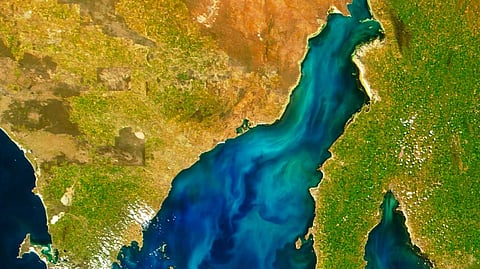

Australia’s national science agency, CSIRO, has successfully concluded initial trials of a 'weather service' designed for water quality assessment in the Spencer Gulf in South Australia, a region crucial to the nation's seafood production.
The AquaWatch Australia Mission by CSIRO integrates data from water sensors and satellites, employing computer models and artificial intelligence to offer nearly real-time monitoring and forecasts for water quality.
In collaboration with SmartSat CRC and the South Australian Research and Development Institute (SARDI), the Spencer Gulf test site represents the first successful implementation of the AquaWatch technology in Australia.
CSIRO senior scientist Dr. Nagur Cherukuru emphasized the team's shift towards gathering data to benefit the thriving aquaculture industry in the area, providing early warnings for potential harmful marine events such as algal blooms.
"The Spencer Gulf is called ‘Australia’s seafood basket’ for good reason," noted Cherukuru. "The region’s aquaculture will put seafood on the table for thousands of Aussies these holidays, with the local industry’s production worth over $238 million a year."
Seeking early adopters in the industry, CSIRO aims to extend the AquaWatch system and encourage local seafood farms to utilize it for monitoring and forecasting water quality.
SARDI oceanographer Dr. Mark Doubell highlighted how the partnership significantly enhances water quality monitoring, supporting the ecologically sustainable growth of aquaculture in the region.
"The delivery of real-time data and improved satellite observations on water quality provides new information that complements existing operational oceanographic models to inform on the ecologically sustainable use and development of our precious marine systems," he said.
Kirsten Rough, Research Scientist at the Australian Southern Bluefin Tuna Industry Association, acknowledged the suitability of the Spencer Gulf for aquaculture due to its typically good water quality. However, she stressed the need for improvements in current water monitoring efforts.
“In certain conditions, algal blooms can form, which threaten our stock and can cause significant losses for the industry,” Ms Rough said.
“Whilst we do monitor water quality, it’s currently time-consuming and labour-intensive. Real-time monitoring means we can scale up surveillance and adjust feeding cycles. Early warning forecasts would allow for planning decisions like moving pens out of the way of harmful algae," Rough added.
CSIRO is extending an invitation to traditional custodians and industry partners to collaboratively design the next phase, expanding water quality monitoring in the Spencer Gulf and providing data to decision-makers and Elders.
Professor Andy Koronios, CEO of project partner SmartSat CRC, emphasized the collaboration's role in establishing critical infrastructure and national water sensor networks.
“We are working hand-in-hand with CSIRO to harness data from satellites so we can better manage this very valuable resource,” he said.
“AquaWatch is establishing critical infrastructure through a state-of-the-art data system and national water sensor networks to help our country become more resilient to extreme weather and adverse marine events.
“The technologies and capabilities that we are developing for the nation will result in commercial opportunities in aquaculture, in fisheries and in making Australia a high-tech nation," Koronios said.
